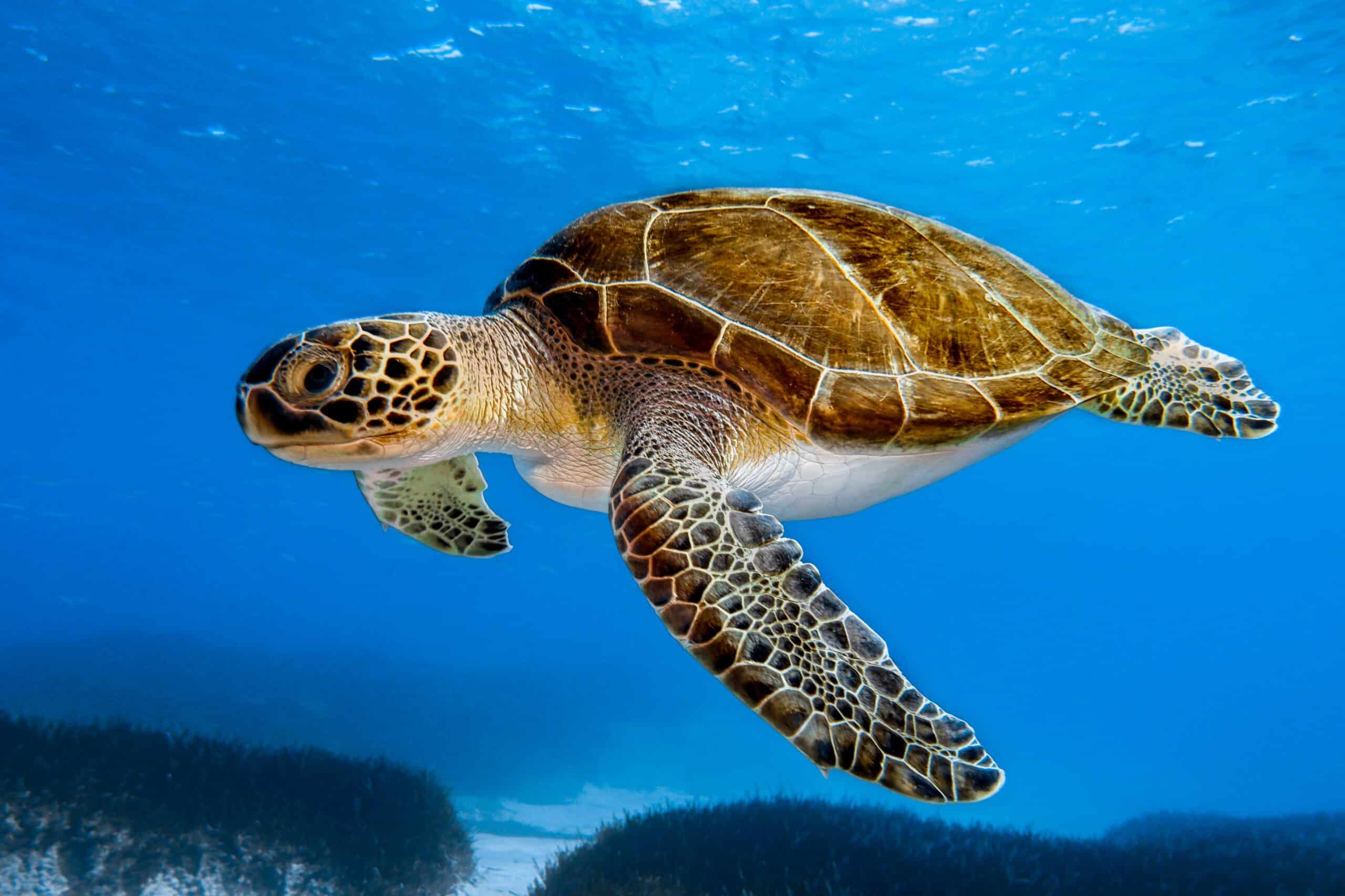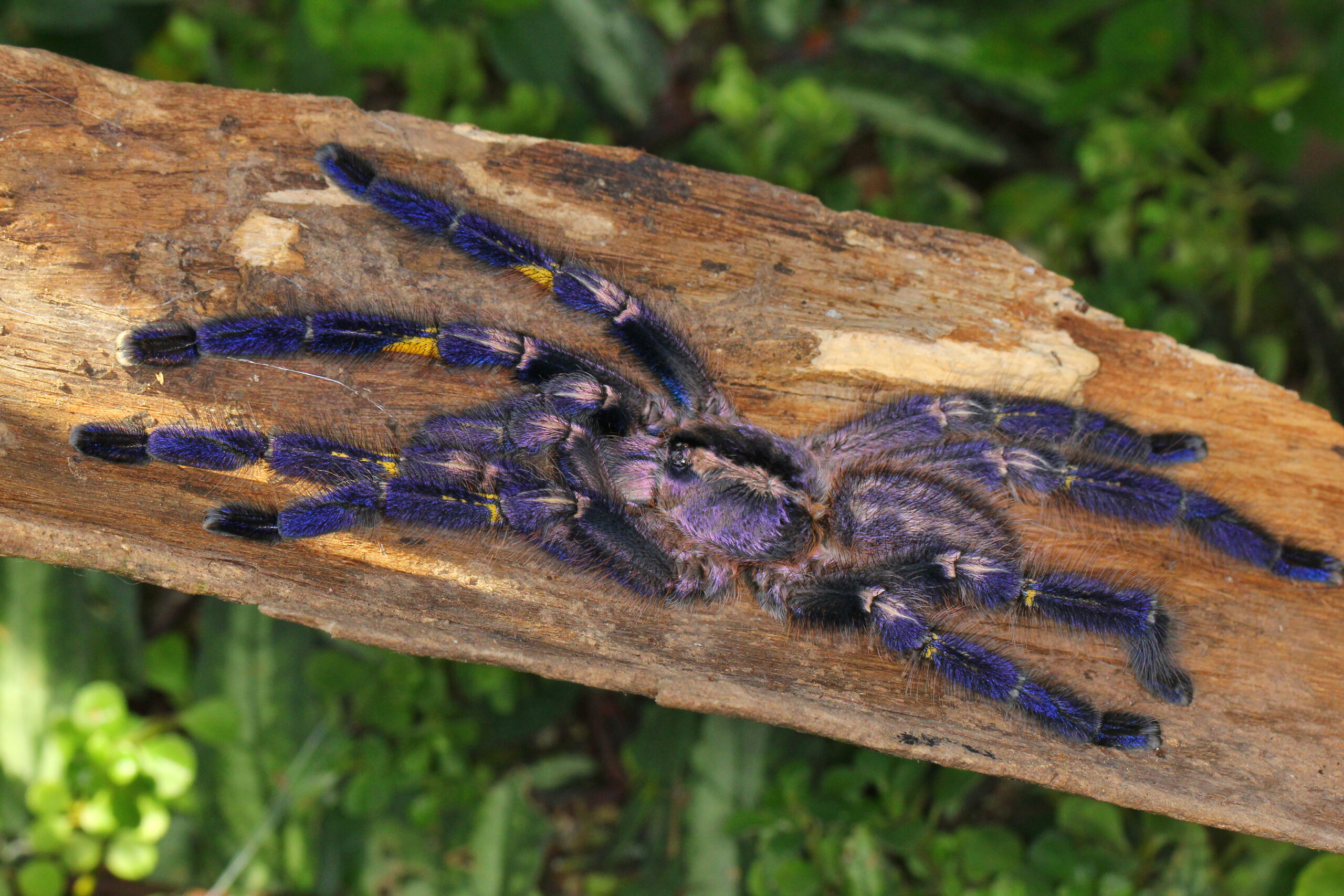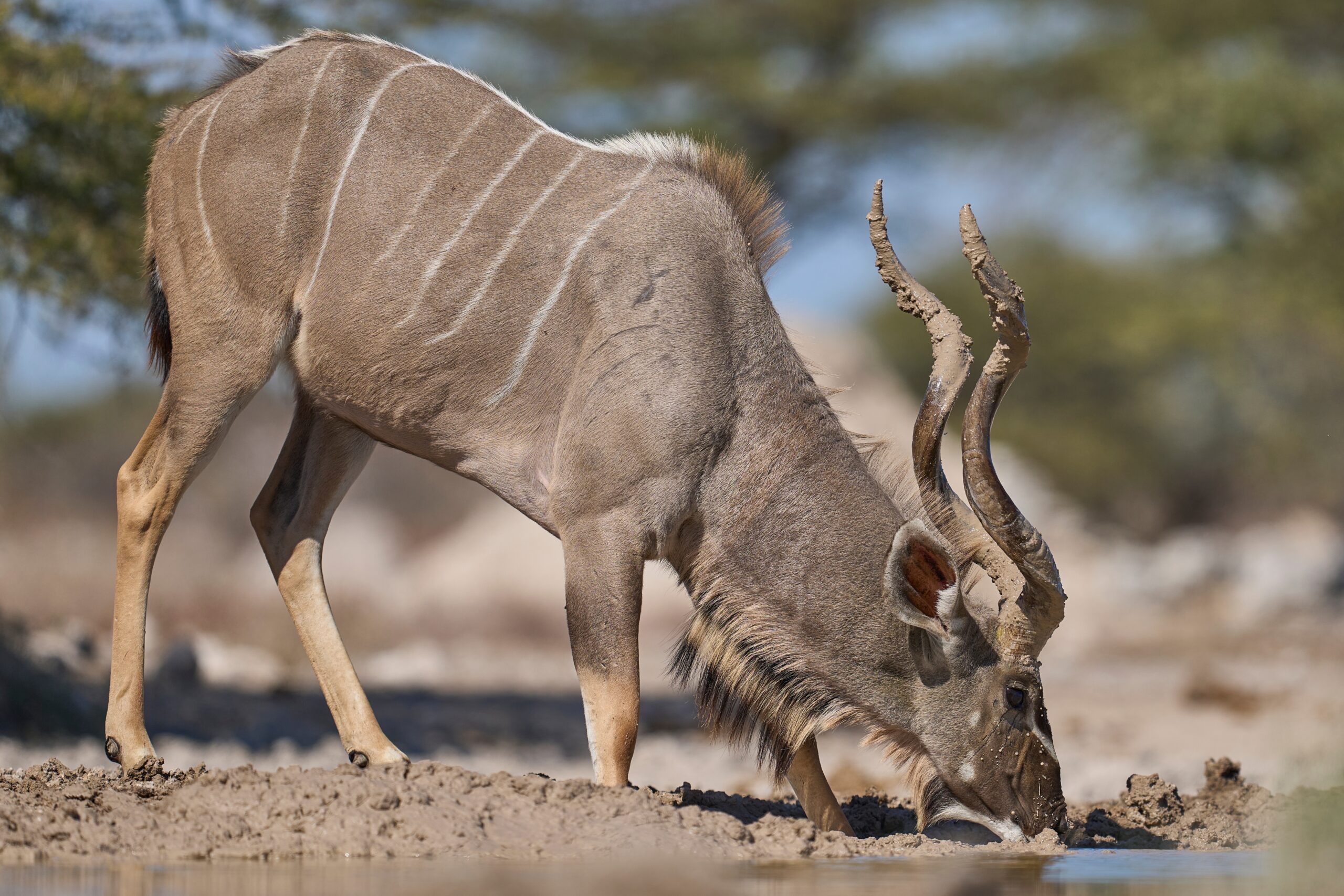Amphibians are known for their fascinating ability to thrive in a variety of environments, but it’s their vibrant and unexpected skin colors that truly captivate. From bright blues and fiery reds to unique purples and stunning patterns, these amphibians use their vivid hues for survival, warning predators or blending into their surroundings. Many of these striking colors are linked to toxins or specific habitats, making them both beautiful and functional. This list highlights some of the most eye-catching amphibians with surprising skin tones, showcasing nature’s brilliant use of color. Each species has evolved uniquely, and their bold appearances are just the beginning of their fascinating stories.
Blue Poison Dart Frog
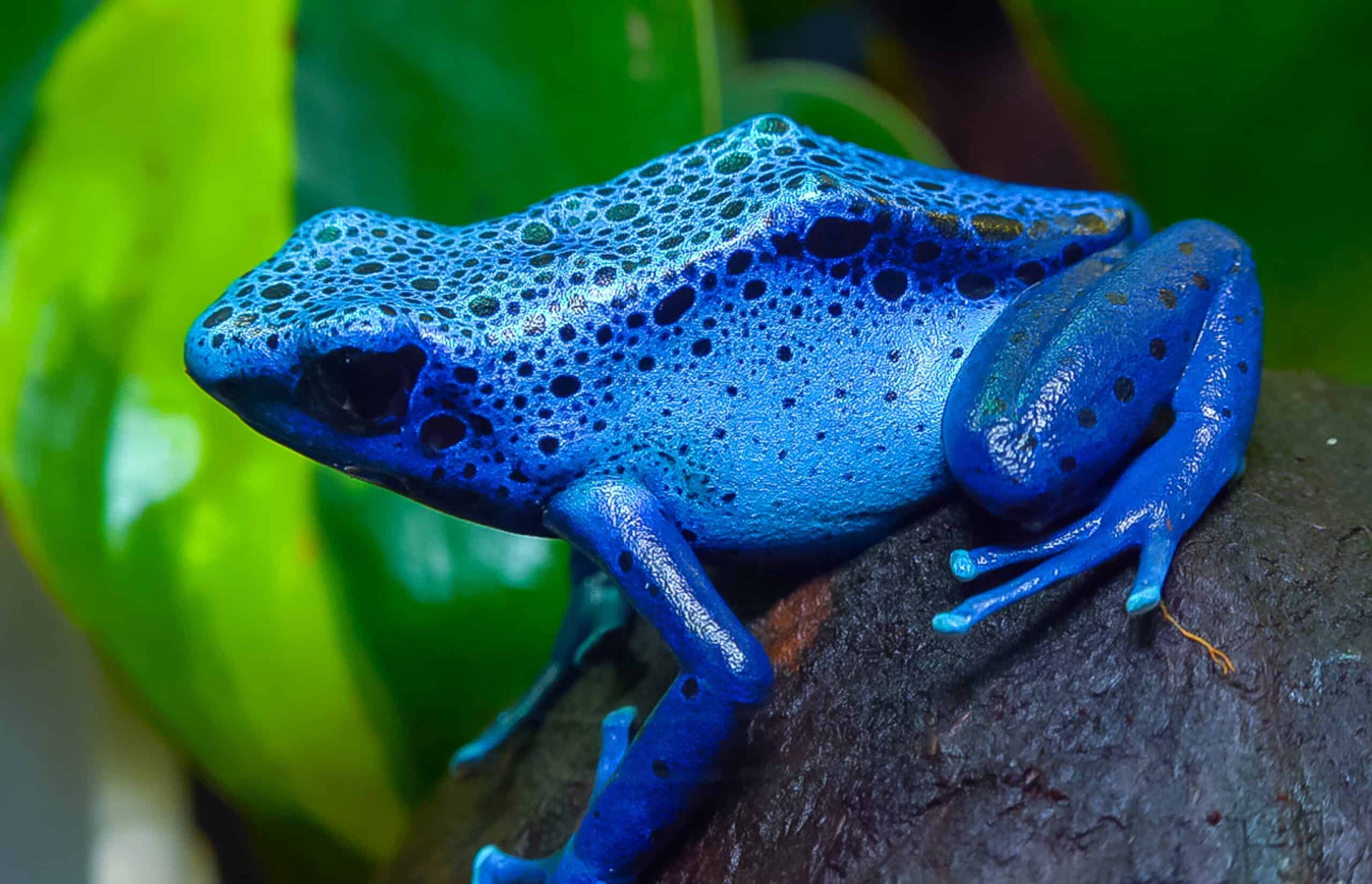
The Blue Poison Dart Frog dazzles with its intense blue skin, spotted with black markings. Found in the rainforests of Suriname, this amphibian’s striking coloration is a warning to predators. Its skin contains potent toxins, which makes it a dangerous meal. Despite its toxicity, the frog is relatively small, growing no more than two inches in length. Their brilliant blue hue serves as camouflage in the dappled rainforest light. The combination of its size and vivid color makes it one of the most striking frogs in the world.
Red-Eyed Tree Frog
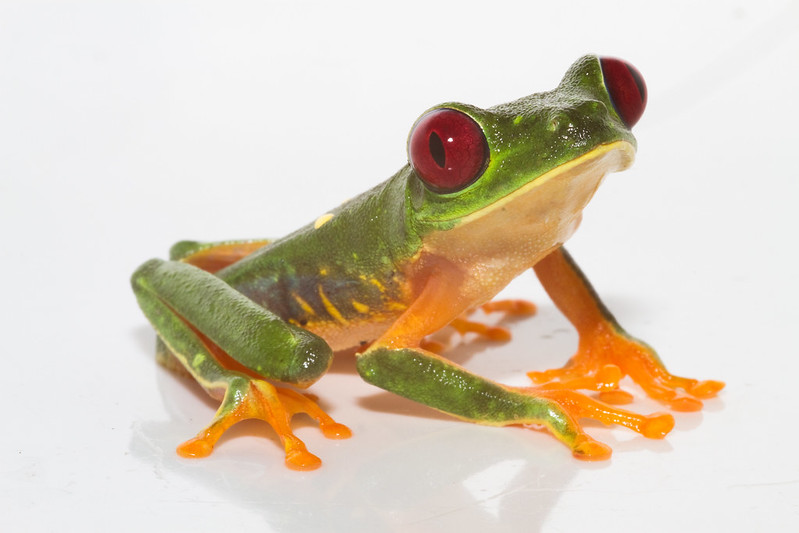
With its vibrant green body and startling red eyes, the Red-Eyed Tree Frog is impossible to miss. Native to Central America, this frog also has bright blue and yellow stripes along its sides. When threatened, it flashes these vivid colors to startle predators. Their bulging red eyes help them blend into their environment by breaking the frog’s outline among leaves. This species is arboreal, spending most of its life in the trees, using its vivid color for defense rather than blending in. At night, the frog is far less visible as it moves through the dense foliage.
Axolotl
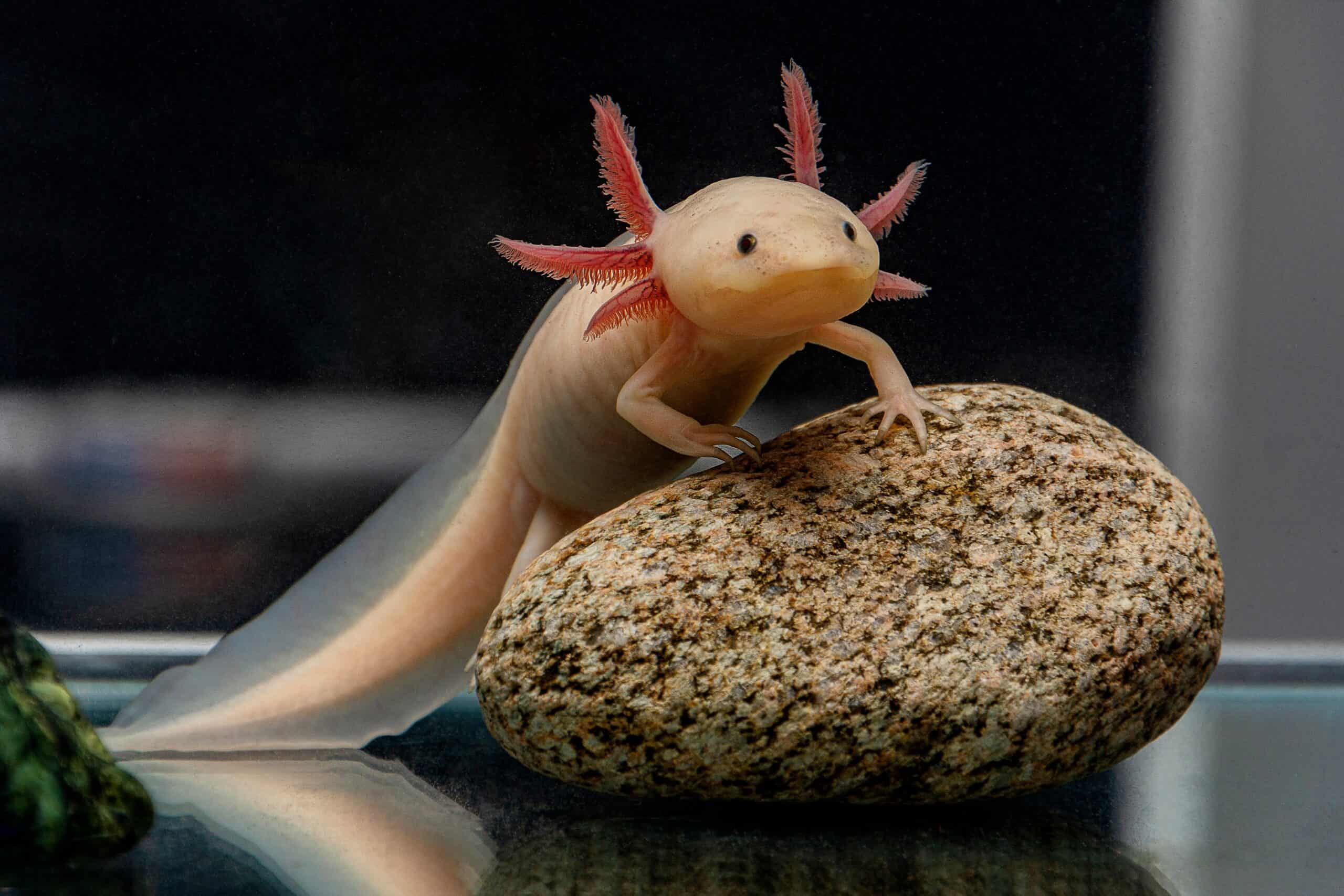
The Axolotl stands out with its unique pale pink or albino-like skin, occasionally spotted with patches of black or brown. This Mexican salamander remains in its juvenile form throughout its life, giving it an almost otherworldly appearance. Its skin tone can vary dramatically, including wild types with a more muted, dark green color interspersed with bright golden highlights. Their feathery gills, often a vibrant pink, create a mesmerizing contrast against their smooth skin. Known for its regenerative abilities, the Axolotl can regrow entire limbs, further adding to its unique charm. Its skin tone is largely influenced by its genetics and environment.
Golden Poison Frog
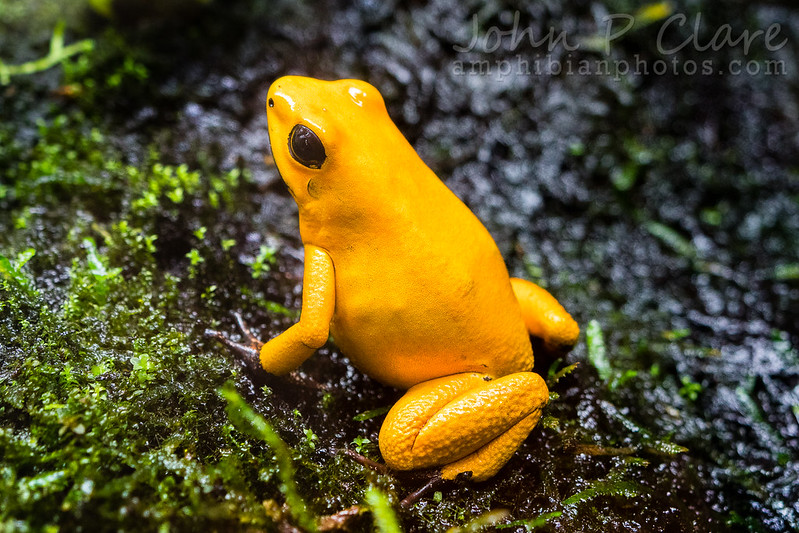
As one of the most toxic creatures on Earth, the Golden Poison Frog flaunts a bright yellow or orange skin. Native to the rainforests of Colombia, this amphibian’s vivid color serves as a clear warning to potential predators. Its striking hue, combined with its small size, makes it both a marvel and a mystery. Interestingly, the toxins in its skin are derived from its diet of ants, which accumulate in its body. This frog’s radiant color contrasts sharply with the dark, dense forest floor it inhabits. Despite its lethal potential, it’s a fragile species, sensitive to environmental changes.
Tomato Frog
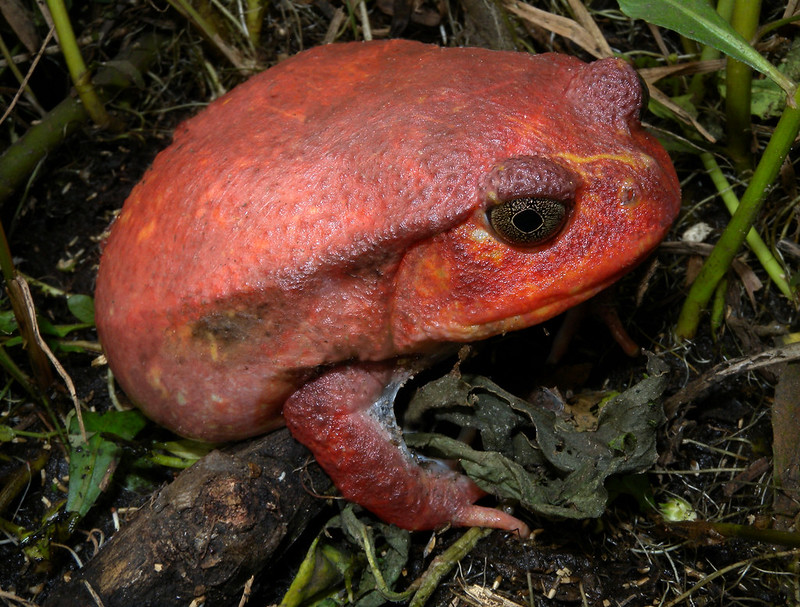
The aptly named Tomato Frog is native to Madagascar and boasts a vibrant, tomato-red color. This bright red-orange amphibian uses its bold coloration to warn off predators, secreting a sticky substance when threatened. Its round, plump body adds to the tomato-like appearance, making it easily recognizable. Living in humid forests and marshes, the frog blends in well with the reddish-brown leaf litter. Females are notably brighter in color than males, using their size and hue for defensive purposes. While their skin might seem appealing, it’s highly toxic to would-be attackers.
Harlequin Poison Dart Frog
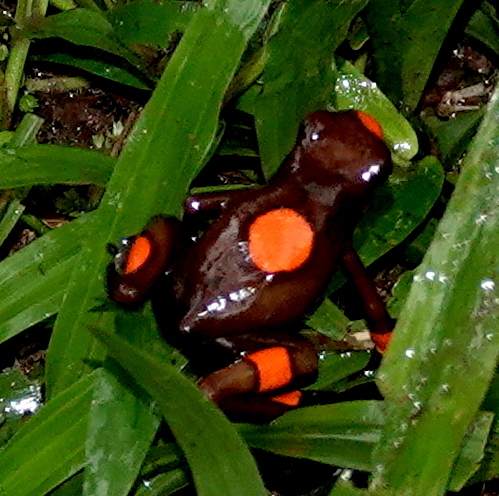
The Harlequin Poison Dart Frog is a kaleidoscope of color with its orange and black body often highlighted by blue legs. Native to Central and South America, this amphibian has a patchy pattern that makes it look like a work of abstract art. Its skin contains potent toxins, and its bold colors act as a visual deterrent to predators. The variety in its coloration also helps the frog blend into the forest floor in a unique form of camouflage. Though small, the Harlequin’s dazzling appearance makes it highly noticeable in its native habitat. Each individual frog has slightly different patterns, making no two alike.
Waxy Monkey Tree Frog
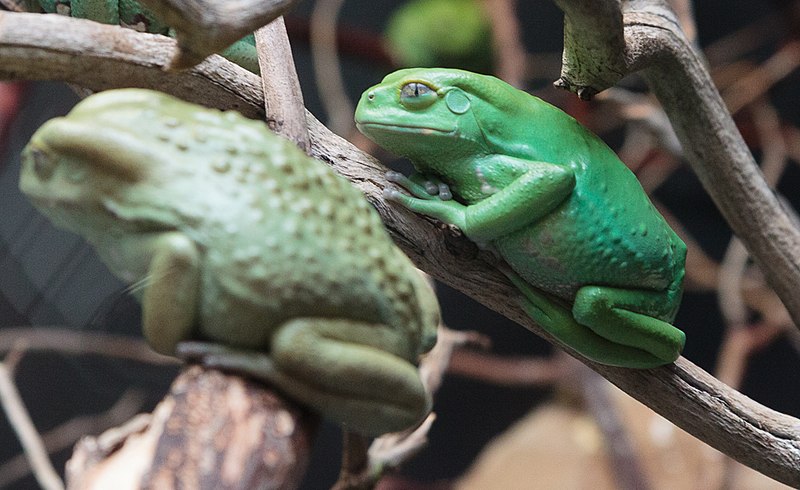
A vivid green shade covers the Waxy Monkey Tree Frog, with a smooth texture that gives it a waxy appearance. Native to the forests of South America, this frog uses its coloration to blend into the leaves where it resides. Its skin tone is so bright that it often looks like a wax sculpture in the wild. Unique among amphibians, it secretes a waxy substance that helps it retain moisture in arid environments. Their behavior is fascinating too, as they tend to move slowly, like a primate, rather than hopping. This odd combination of vivid color and unusual movement makes them stand out.
Green-and-Black Poison Dart Frog
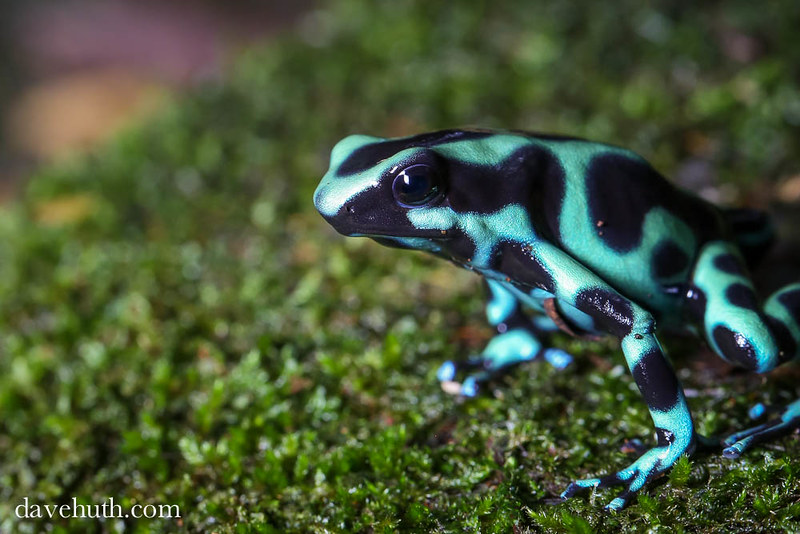
This tiny frog has an electric green body crisscrossed with deep black markings, creating a mesmerizing contrast. Found primarily in the rainforests of Central America, the Green-and-Black Poison Dart Frog is a common sight but never blends in. Its bright green color stands out against the dark, humid forest backdrop. Like other poison dart frogs, its vivid coloration warns predators of its toxic nature. The frog’s skin produces alkaloid toxins, derived from its insect-heavy diet. Its bold appearance has made it a favorite among collectors, though its natural habitat remains threatened.
Malagasy Rainbow Frog
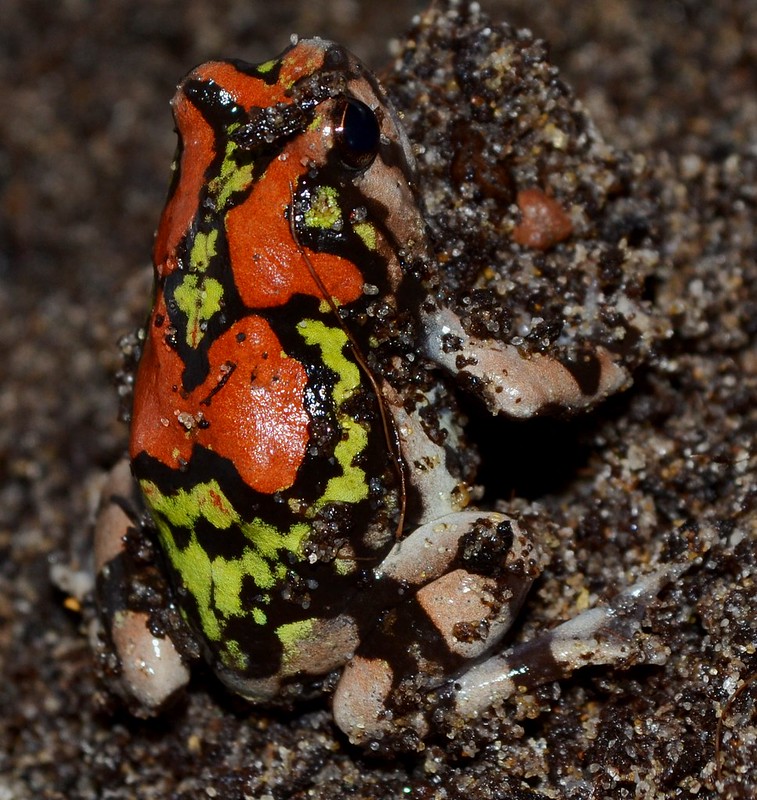
The Malagasy Rainbow Frog, native to Madagascar, lives up to its name with its combination of red, green, yellow, and black hues. Its intricate color patterns make it one of the most visually stunning amphibians on the planet. This frog is adept at climbing and often burrows underground during the dry season to avoid heat. Despite its vivid coloration, it’s quite shy and spends much of its life hidden in rock crevices. The bright colors are not just for show—they serve as camouflage in its rocky, multicolored environment. Its unique combination of climbing, burrowing, and vibrant skin makes it a marvel of nature.
Purple Frog
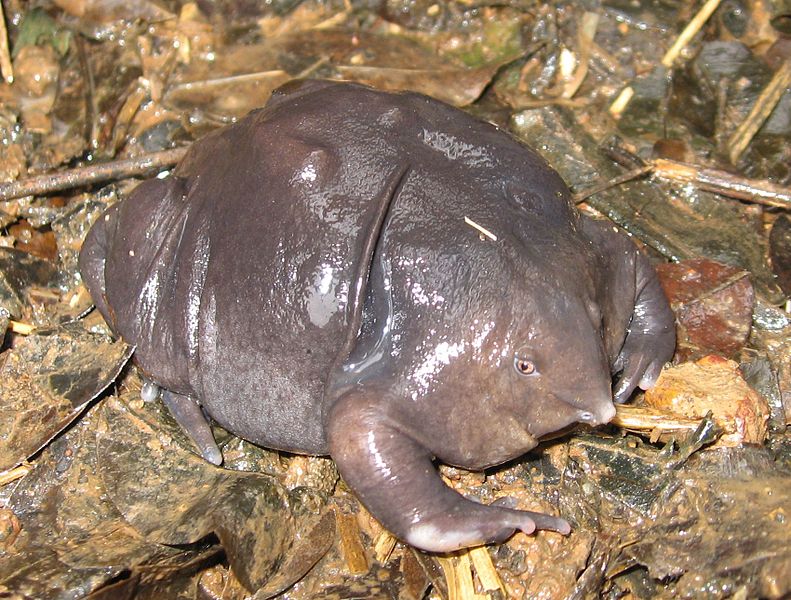
Unlike most amphibians, the Purple Frog sports a deep violet or purple skin, which helps it stand out in the wild. Native to India, it spends much of its life underground, emerging only during the monsoon season to breed. Its large, bloated body and small head make it look quite unusual compared to other frogs. The deep, almost glossy purple color helps it camouflage within the mud and wet leaves where it lives. This amphibian has adapted to an underground lifestyle, with limbs built for digging. The frog’s rare and vivid color combined with its subterranean lifestyle makes it a unique species in the amphibian world.
Strawberry Poison Dart Frog
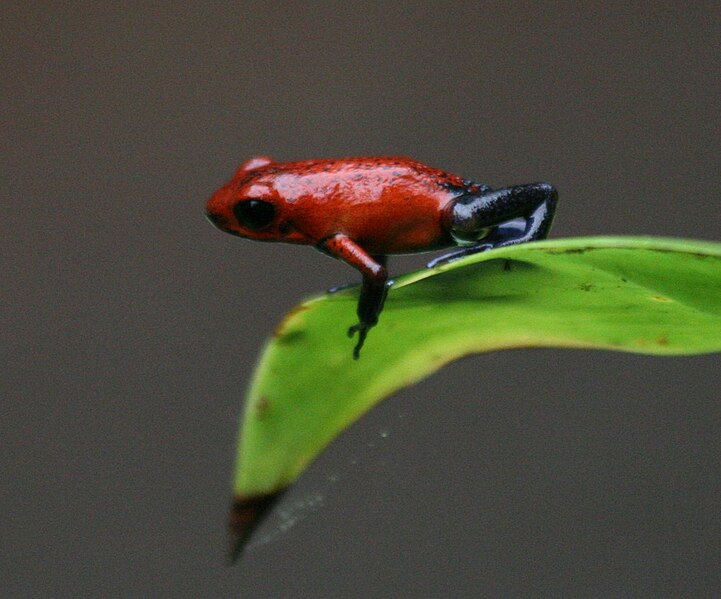
The Strawberry Poison Dart Frog wears a bright red skin that looks almost like a ripe strawberry, with blue or green legs adding a striking contrast. Found in Central American rainforests, it is one of the more recognizable poison dart frog species. The bold color warns predators of its toxicity, which it gains from its diet of ants and other insects. Despite its vivid appearance, this frog is small, usually only about an inch in size. The variation in leg color between different populations gives it an extra layer of intrigue. Its radiant red body against lush green environments makes it stand out sharply.
Amazon Milk Frog
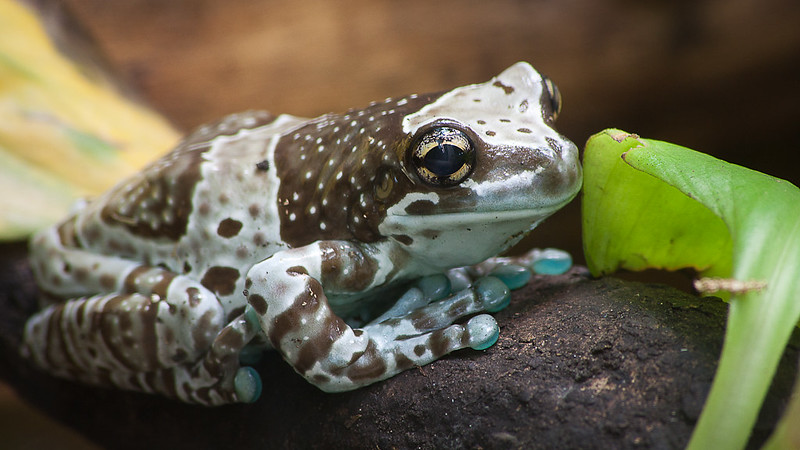
The Amazon Milk Frog is named for the milky secretion it produces when threatened, but its skin color is just as notable. With pale blue or green skin and bold black or brown stripes, it looks like a creature out of a fantasy novel. Native to the Amazon Basin, this tree-dwelling amphibian spends much of its time in the rainforest canopy. Its coloration provides some level of camouflage among the tree bark, but it remains one of the most eye-catching frogs in its habitat. Juveniles are even brighter, with more pronounced colors that fade slightly as they age. The Amazon Milk Frog’s smooth, glossy skin adds to its overall appeal.
Red-Spotted Newt
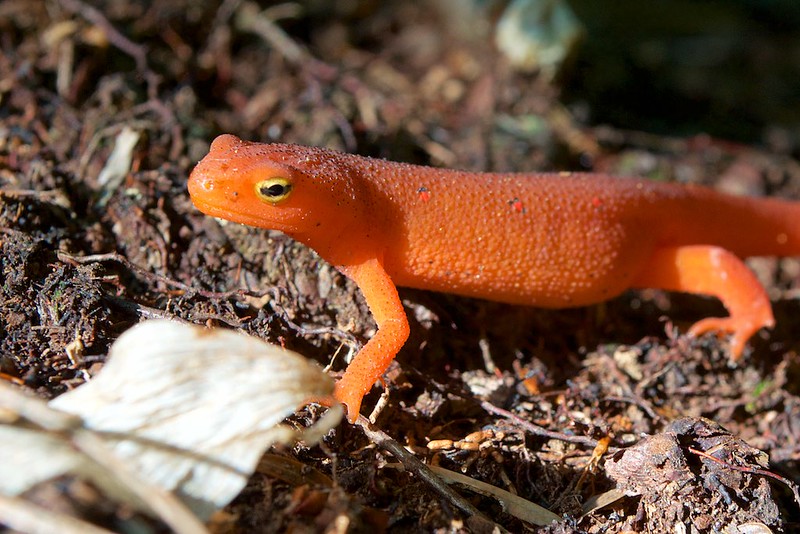
Bright orange skin with red spots along its back makes the Red-Spotted Newt a highly visible amphibian in North American forests. As a juvenile, this newt goes through a stage called the “red eft” phase, where its coloration is at its most vivid. The bright color serves as a warning to predators, as its skin secretes toxins when threatened. As it matures into an adult, the newt’s skin changes to a more subdued olive green, though the red spots remain. This amphibian’s vibrant skin is both a defensive mechanism and a striking feature. Its life cycle, transitioning from bright juvenile to a more muted adult, adds to its fascinating nature.
Yellow-Banded Poison Dart Frog
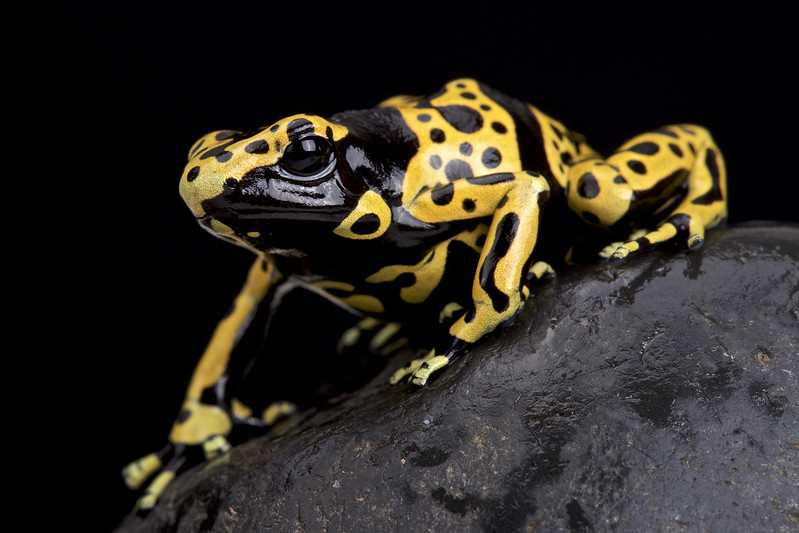
With alternating bands of yellow and black, the Yellow-Banded Poison Dart Frog is impossible to miss. Its vibrant yellow coloration warns potential predators of its toxic skin, making it one of the most poisonous species of its kind. Found in the rainforests of Venezuela and Brazil, this frog’s bold patterning stands out in its lush surroundings. Despite its small size, the combination of bright yellow and stark black creates a powerful visual impact. Its diet of ants and other small insects helps it produce the toxins in its skin. This amphibian’s color not only serves a defensive purpose but also adds to its aesthetic appeal.
Chinese Fire-Bellied Newt
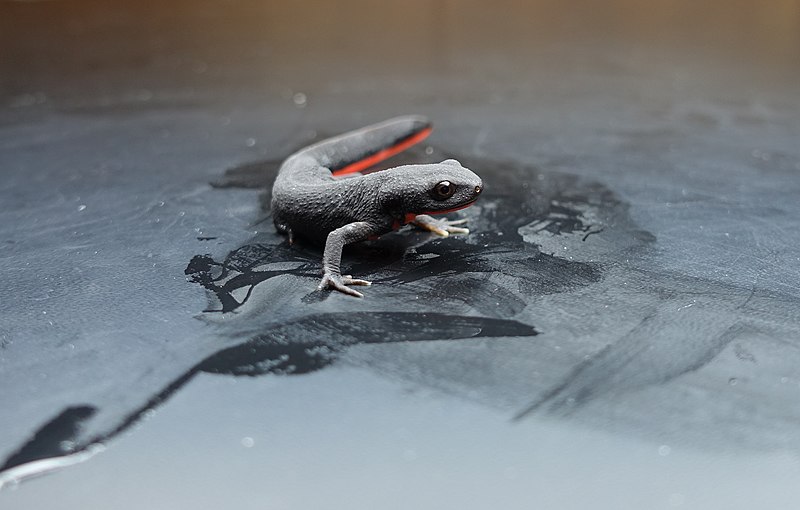
The Chinese Fire-Bellied Newt is known for its dark black or brown upper body contrasted by a vivid, fiery orange or red belly. When threatened, the newt arches its back, displaying the bright underside as a warning to predators. Its skin contains toxins, and the bold coloration serves as a defense mechanism. Native to China, this amphibian prefers slow-moving water and marshy environments. The contrast between its dark and bright coloration is striking, especially when seen from underwater. The fire-bellied newt’s vivid belly adds to its unique charm, making it a favorite among enthusiasts.
This article originally appeared on Rarest.org.
More From Rarest.Org
Ocean pollution is causing severe harm to some of the most vulnerable marine species. Plastics, chemicals, and other pollutants are threatening the delicate balance of marine ecosystems. Read more.
Nature has a way of showcasing stunning artistry, and some spiders are no exception. These arachnids, with their vibrant colors and intricate patterns, resemble miniature works of art. Read more.
Natureâs creativity shines through the stunning fur patterns of certain mammals, making them stand out in their habitats. From stripes to spots, these unique designs help with camouflage, identity, and even temperature regulation. Read more.

